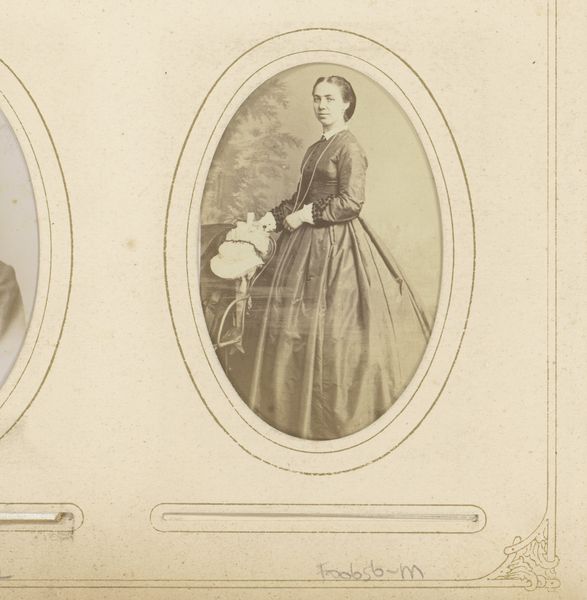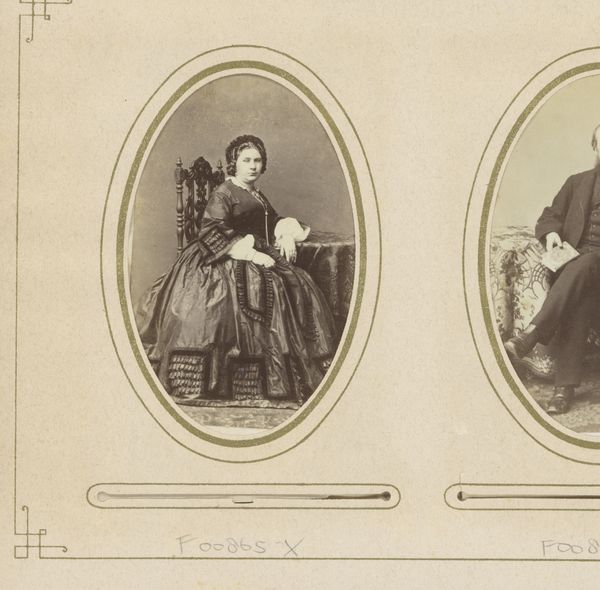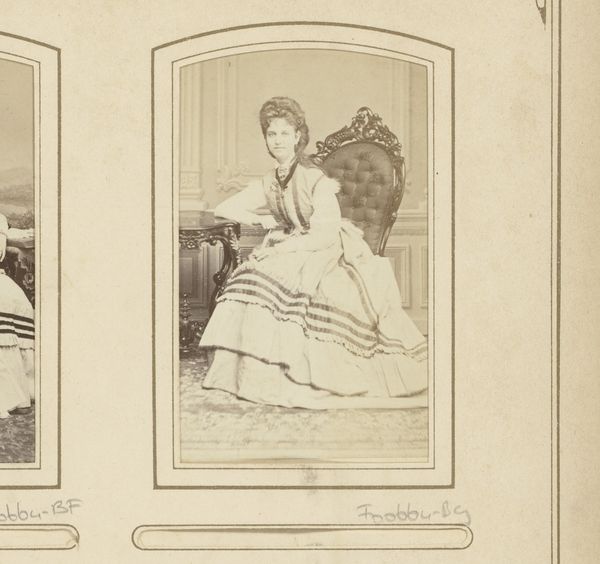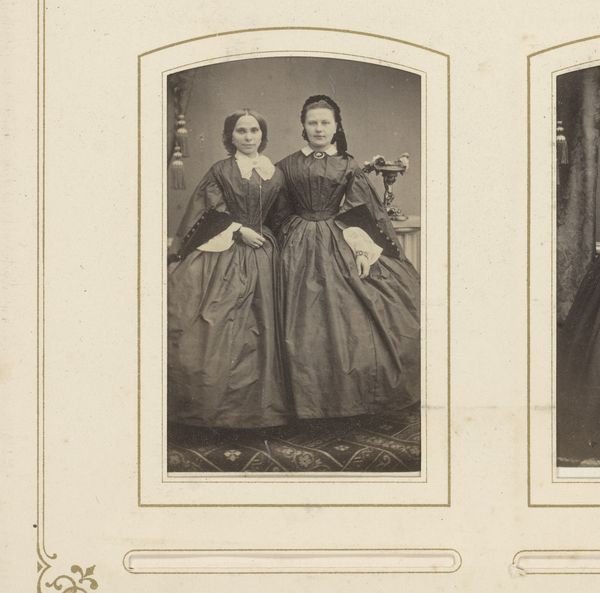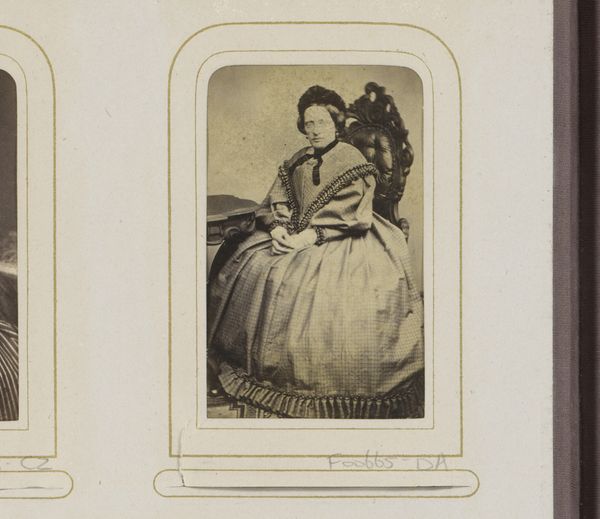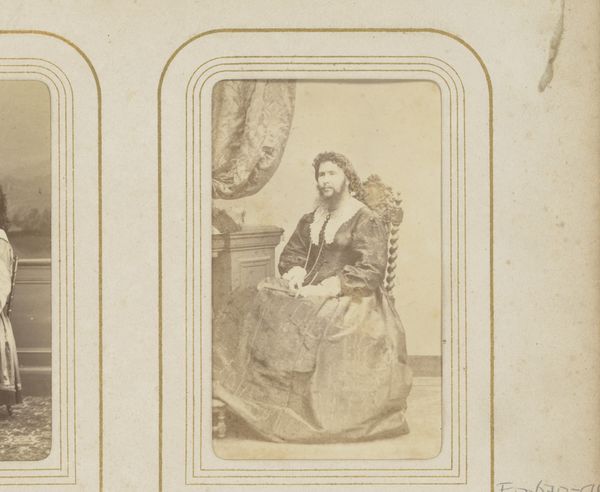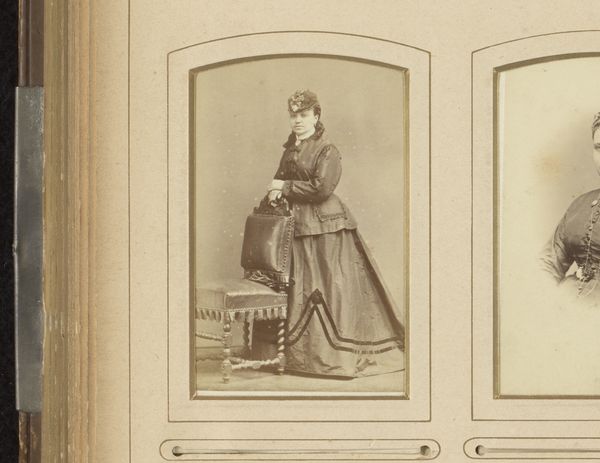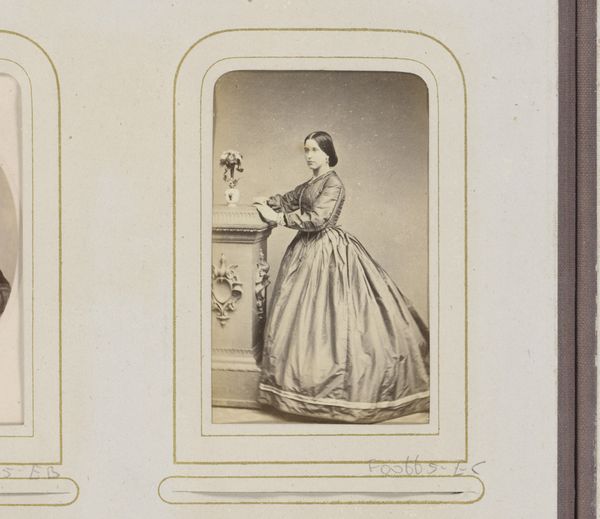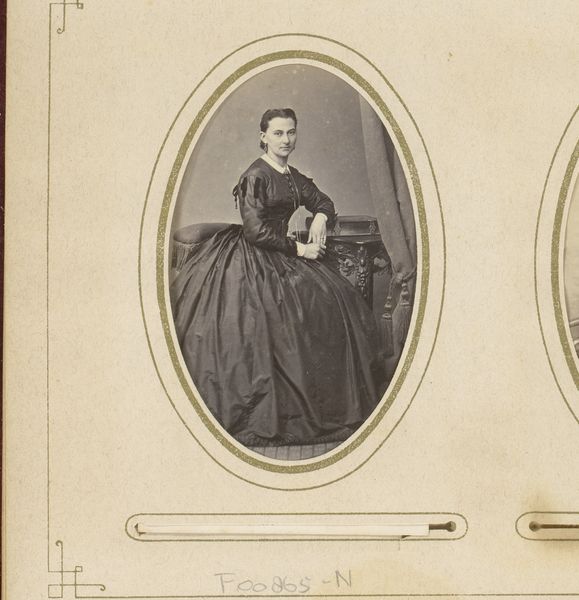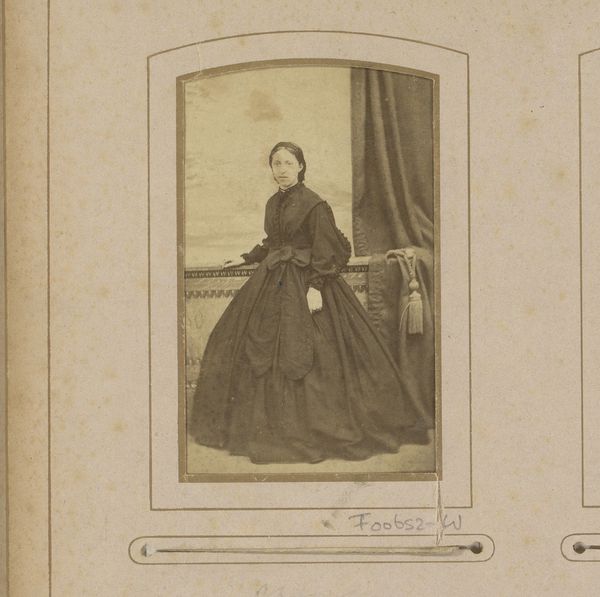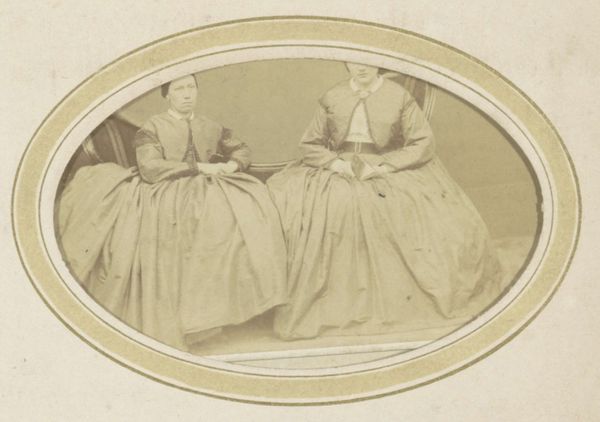
photography
#
portrait
#
photography
#
historical photography
#
group-portraits
Dimensions: height 85 mm, width 51 mm
Copyright: Rijks Museum: Open Domain
Curator: This photographic print, entitled "Portret van twee vrouwen om een tafel," or "Portrait of Two Women at a Table," dates to around 1860-1875. It comes from the studio of John Gaisford. Editor: It strikes me as intensely melancholic. The sepia tone only amplifies this feeling, creating a somewhat haunting portrayal. There’s a strong focus on materiality— the draping fabric of their dresses, the tactile lace trim on the table, and even the evident photographic paper it's printed on all draw attention to texture. Curator: It is typical of the era, you know; portraiture became more widely accessible due to technological advances in photography. Group portraits such as this capture not only appearances but also social relationships and hierarchies. Notice how their positioning in relation to each other likely signifies rank, station or some family dynamic. Editor: Absolutely. I'm curious about what's placed on the table. It almost resembles tools, perhaps writing implements? This offers insight into their world of labour and craft and intellectual pursuits, moving away from stereotypical portrayals that only focused on their marital potential. I mean, is that a knife? Curator: Good eye. That would likely be used for cutting the thread for embroidery work. Consider the limited visibility of women’s work during this era and what photography has preserved. Editor: This isn’t simply about preservation of a subject in time. These portraits immortalize an aspirational version of one’s life, with subtle choices in materials and the careful inclusion of particular symbolic objects— Curator: Precisely, and institutions played a key role in dictating societal mores in what images and values they selected to display and ultimately uphold through careful commissions such as this one, making these portraits valuable, historical evidence for contextualizing our social and cultural norms. Editor: It’s interesting how considering the materials allows us to examine labor, social context, and even the nuances of portraiture from this period—a complex interplay of photographic method and status presentation, really. Curator: The camera has always been more than a recorder of images; it’s a cultural and political artifact itself. Examining the image in detail tells us more than we originally perceive from the faces present.
Comments
No comments
Be the first to comment and join the conversation on the ultimate creative platform.
